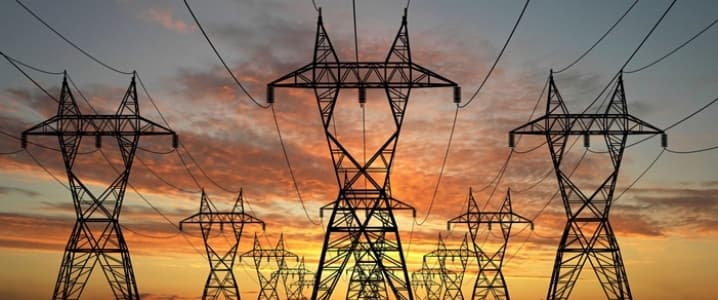Electricity sales in 2016 fell, the sixth year in the past ten in which America’s electricity users managed to do with less. Industrial firms made the sharpest cuts in their electricity usage. Their consumption fell in seven of the past ten years.
The 1.3 percent drop in total consumption in 2016 looks small but it comes despite economic growth and lower real price of electricity. Okay, economic growth has not been robust and the real decline in price small, but electric sales always used to go up when the price of electricity declined and the economy grew.
In economic parlance, electricity had a negative price and positive income elasticity. In the old days a 1.6 percent improvement in real gross domestic product (GDP) and a 2.5 percent real price decrease together should have spurred consumers to use at least 1-2 percent more electricity. But, with similar conditions in both 2015 and 2016, kWh sales declined in both years.
Figure 1.
Index of total electricity sales, real GDP and real price of electricity (2014 = 100)
(Click to enlarge)
The picture for industrial usage is even more puzzling. Industrial users consumed 5.1 percent less electricity in 2016. Industrial users have been cutting back for years. Admittedly, the industrial production numbers have been weak, but sales of electricity to industrial customers has been far weaker as seen in Figure 2.
Figure 2.
Index of industrial electricity sales and Industrial Production Index (2014 = 100)
(Click to enlarge)
Almost fifty years ago, during a previous Energy Crisis, price of electricity shot up and demand for it fell. But industry people associated the sales drop with a patriotic fervor and a desire to limit our dependence on Middle Eastern oil (even though electricity doesn't come from the Middle East and domestic coal was the main electric boiler fuel).
Eventually, the utility industry got the message. Sharp price increases have consequences. We have no doubt that a competent econometric analysis would tease out the impact of price and economic condi-tions on the past year’s electricity sales and show that price and income still matter, but we suspect that other factors are presently swamping the orthodox explanations for growth or the lack of growth, such as changes in population mix (the over 65 cohort is the fastest growing sector of the population), the increas-ing efficiency of lighting and appliances and the decline of domestic manufacturing. Related: Is The U.S. Becoming Overdependent On Natural Gas?
Newer control devices will determine consumption patterns, using algorithms that take into account cur-rent price and conditions on the grid. Consumers will not have to think about what they want to do, which will make it easier to adjust usage more frequently.
That brings up the question whether the old elasticity patterns, which require human thought and action, will change when they do not. But the meager rise in electricity sales since the bottom of the Great Reces-sion, in one of the longest economic upturns since World War II, raises the suspicion that the old elasticity patterns have already broken down, and what comes next might be worse for the industry. Unless, of course, the entire auto industry converts to the electric car. But with electric car sales now less than 1 per-cent of total car sales, we would not expect an industry turnaround soon from that source in the near term.
ADVERTISEMENT
Weakness in domestic electricity sales does not bode well for prospective sales of coal or natural gas to the electricity industry. In addition, renewables will continue to take a small but growing slice of the Amer-ican kilowatt-hour pie.
The possibility that devices will automatically control demand does not bode well for electric generators, either. The electric utilities hope to salvage their situation by investing in providing more reliable service. This includes the smart devices on customer premises that will reduce the demand that helps to sell fuel, power in bulk and capacity. Unless sales begin to pick up again, the component parts of the electricity in-dustry may end up at each other’s’ throats fighting for pieces of a shrinking pie. If so, the company with the customer contact may prove the winner.
By Leonard Hyman and William Tilles
More Top Reads From Oilprice.com:
- U.S. Shale Production Growing At An Unprecedented Pace
- Tensions Rise In Iraq As Kurdish Forces Seize Oil Pipeline
- Why The U.S. Military Is Fully Backing Renewables




















